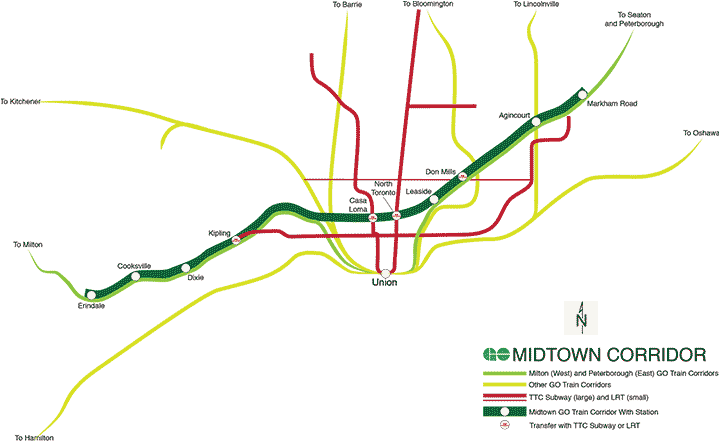Regarding the critical path, I do agree that it goes through the Missing Link. Expanding on that, a thought I had was potentially expanding the York Sub and using it for Toronto to Ottawa/Montreal Via trains. Basically, trains from both would use the Peterborough corridor, and a new connection between the Havelock Sub and the York Sub would be built in Markham.
This would mean that all Via trains would travel to Union via Pearson (and the Kitchener corridor). From an airport connection standpoint, this would mean that both Pearson and Trudeau would be passed by directly on the way to their respective city's downtowns. It would also avoid having to upgrade the Don Branch to handle Via, leaving it open for use by Metrolinx.
Yes, it would be a slightly longer trip distance-wise, but I figured the relative straightness of the York Sub could allow for higher speeds across northern Toronto/southern York Region. There would also be the potential for an HSR station at Yonge St for some trips.
This would mean that all Via trains would travel to Union via Pearson (and the Kitchener corridor). From an airport connection standpoint, this would mean that both Pearson and Trudeau would be passed by directly on the way to their respective city's downtowns. It would also avoid having to upgrade the Don Branch to handle Via, leaving it open for use by Metrolinx.
Yes, it would be a slightly longer trip distance-wise, but I figured the relative straightness of the York Sub could allow for higher speeds across northern Toronto/southern York Region. There would also be the potential for an HSR station at Yonge St for some trips.





